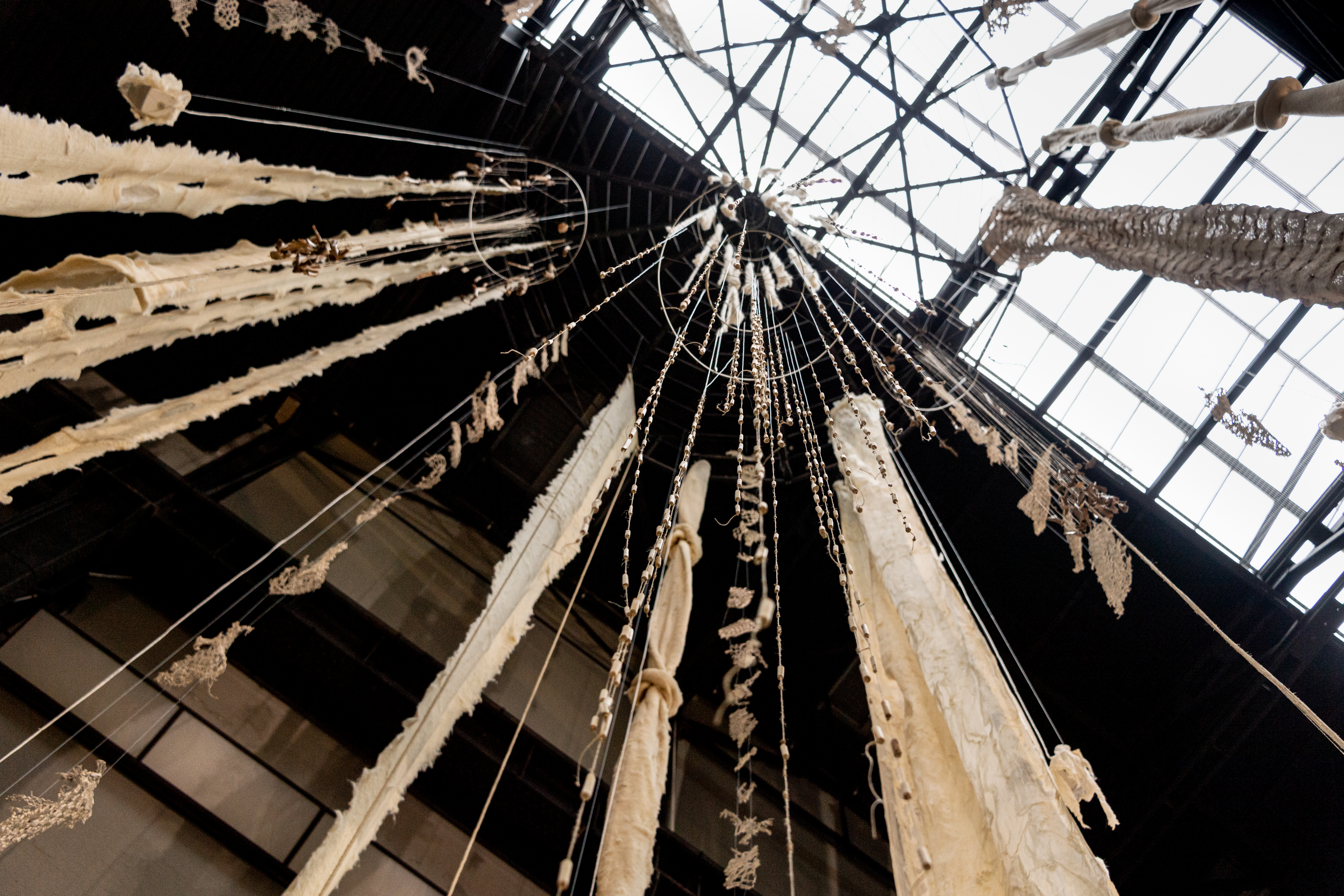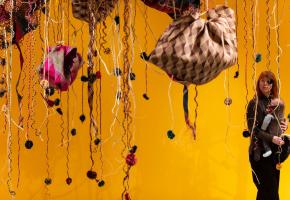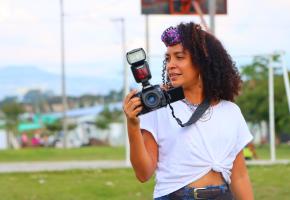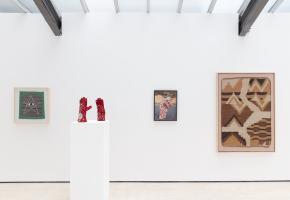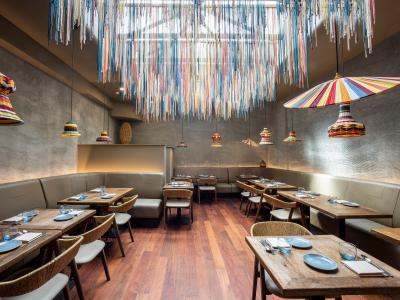"I saw an advert at Mujeres de Cambio (Change Makers) one of the organisations where I am involved," says Ecuadorian fashion designer and textile artist Soraya Fernández DF. "I had done some workshops fusing poetry and textiles so when I learned that Cecilia Vicuña was a poet and textile writer too and saw the work, I saw a reflection in myself, and I said to myself, 'this is where I'm from; this is my work.' And I applied."
Patricia Bidi, a Peruvian artist based in London, also felt the urge to apply: "When I saw the project, I felt it was meant for me: I am an artist and a video-recorder."
Siomara Giraldo, a London-based artist from Colombia, heard about the project from a friend,connected with Cecilia's vision and wanted to be a part of it. The three women were chosen among many applicants, and their work began in July, when they began learning about the ancient technique they were going to use.
"We started by collecting the material from the Thames," Siomara Giraldo says. "We would meet when the tide of the river was low, and we would stay until the tide was about to get higher. The first day, we collected plastics and lots of bottles, bones of animals like chickens, sheep, and cows, and even teeth, as well as shells and ceramics."
The product of their labours is now hanging from the ceiling of the Tate’s Turbine Hall; two 27-meter-tall artworks that represent the Amazon in the form of a quipu - a stringed recording device that was used by multiple cultures in South America: ‘The Earth is a brain forest, and the quipu embraces all its interconnections,’ says Cecilia Vicuña.
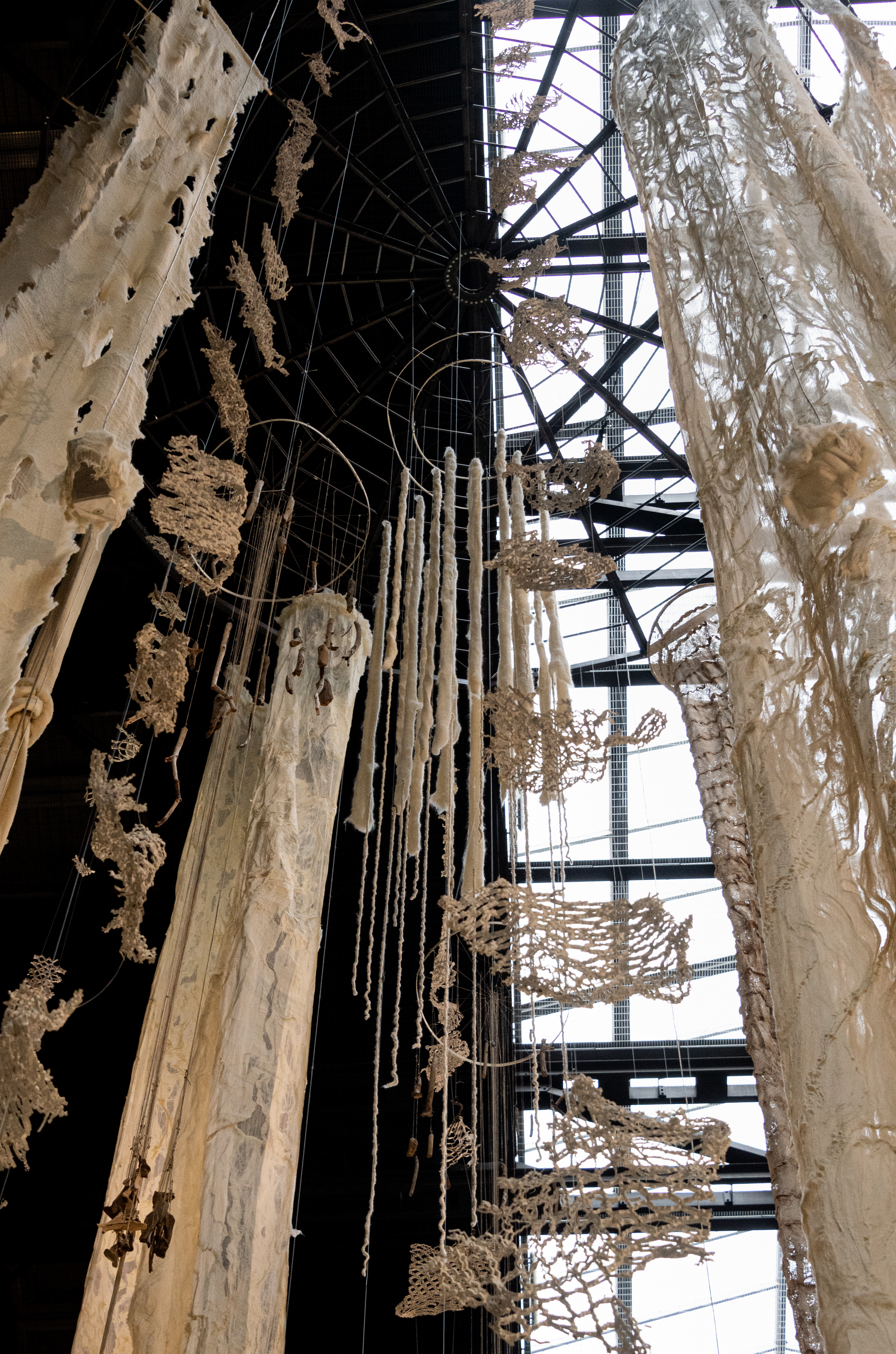
Numerous materials capture your attention among the un-spun wool and plant fibres of the quipu - rope, cardboard, rocks, pipes, wood - materials found along the Thames by Soraya, Patricia and Siomara, an experience they say was like opening a door into the past.
“During the collection process, we discovered the hidden layers of London.” Patricia says. "It was like stepping into lives from the Roman, Medieval and Victorian eras. Then to connect all of this history to the present, it was like animating the past.”
The women then helped weave them into the work of art, and soon became known as the women who ‘untangled the situation.’
“If anything went wrong or the strings tangled with each other over the course of a month of weaving, we were the ones in charge of untangling the situation," Soraya laughs, and explains how in the process of ‘untangling’ they also felt as if they were uniting the histories of South America and London:
“By bringing our ancient South American craft-making to the materials produced from this British culture, it felt like we were untangling all the knots that we have made, to form one culture, one humanity and at the same time dissect all of the environmental damage we've caused.”
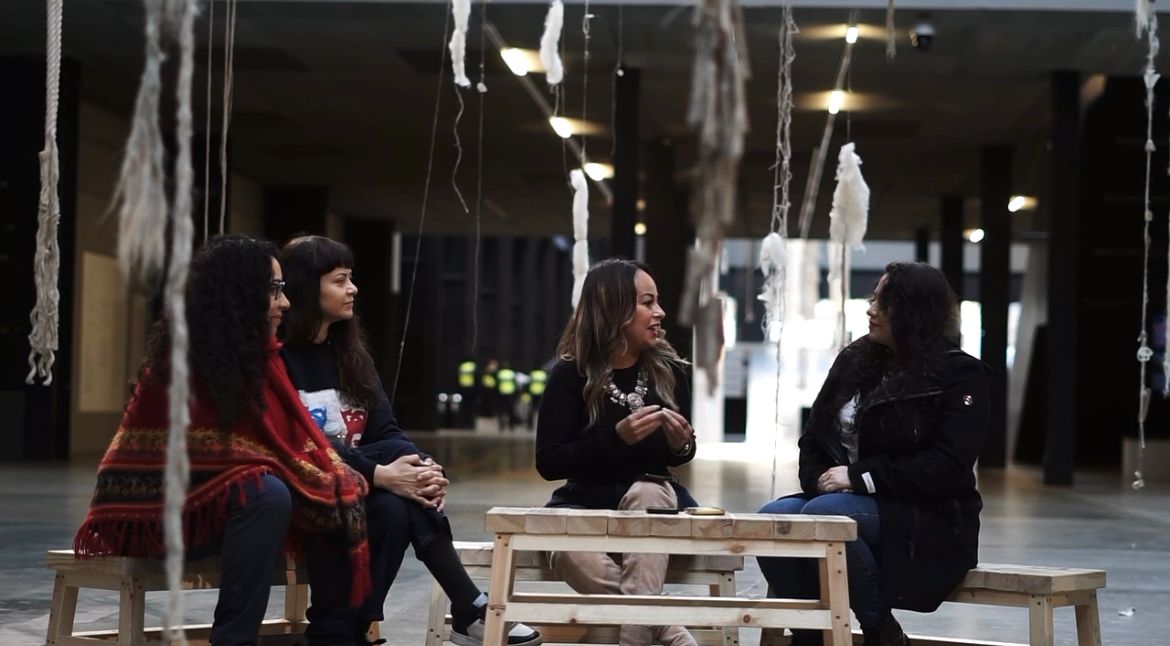
The three women had to learn the technique that the Incas used to make the quipo, weaving the ceramic pipes, the glass, the bones, the stones, from the river, into the knots made of wire, hemp, and cotton.
“Besides us, there was a team of about 40 from the Cecilia Vicuña’s company who took care of the textile part, and we worked as a team with them. It was really a team effort."
As part of the process, Cecilia Vicuña organised rituals that the crew took part in.
“We would hold hands, make a circle, and chant to give our thanks," Patricia said. "Some days we would come with flowers as an offering, as a way of honouring mother earth.”
As well a tribute to nature and ancient cultures, Cecilia Vicuña herself says her work acts as a warning of how precarious this future is, if we don’t look after the present, and environment in which we live.
“The Brain Forest Quipu gives new life to these forgotten things that we found on the river bank,” says Patricia. “But it also reconnects us to how culture overlaps over time. It's both a doorway to the past, and a doorway to the future.”
Indeed, the ghostly skeletal forms of the quipus stand for the dead forests and embody the delicate forces of the ecosystem, while their textures and colours evoke the bleached tree bark of forests killed by drought or intentional fire, as well as other dried-out natural substances like bone and snakeskin.
For Soraya, Patricia, and Siomara, the exhibition inspires us to reconnect with our planet. "The message here is that we should be aware of what we are doing to the environment by constantly polluting and constructing,” Siomara explains.
The interwoven structures also suggest deeper connections between the personal and the universal, from the mysterious grey matter of our brains to the awesome cosmology of deep time and outer space.
"They remind us that we are passengers and that we must leave a better world for our children and our children's children," Patricia adds. “...that we are visitors and that the earth is a living being that we have to respect."
A soundscape is played from speakers within each sculpture. Vicuña worked with Colombian composer Ricardo Gallo on the compositions, which are woven together from new improvised recordings by Vicuña, Gallo plus traditional indigenous music, field recordings of nature and periods of contemplative silence.
The artifacts, ancestral music, wires, and videos combined creates a unique energy that inspires me what it means to me to care for Mother Earth." concludes Soraya. "We are children of the Earth and when we grow up we have to take care of our Mother, who is the one who provides for us. That is the love that we have to give.”
Cecilia Vicuña's Brain Forest Quipu runs until April 2023 at The Tate Modern https://www.tate.org.uk/whats-on/tate-modern/cecilia-vicu%C3%B1a


